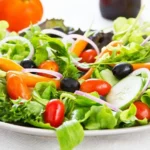
Welcome to our exploration of one of the most versatile and fascinating ingredients in the culinary world: vinegar! Often overlooked as merely a condiment, vinegar boasts a rich history and a myriad of uses that extend far beyond the kitchen. From its role in baking and beauty products to its applications in agriculture and food preservation, vinegar is a powerhouse of functionality and flavor. Whether you’re a cooking enthusiast, a DIY beauty aficionado, or simply curious about this tangy liquid, our list of 25 interesting facts about vinegar will enlighten you on its remarkable properties and diverse applications. Join us as we delve into the science, history, and culinary magic of vinegar, and discover why this humble ingredient deserves a prominent place in your pantry!
Historical Use: Vinegar’s history stretches back over 10,000 years, with its earliest known production traced to ancient Babylon around 5000 BC. Archaeological findings suggest that vinegar was utilized not only as a food preservative but also in medicinal practices. The Babylonians made vinegar from dates and other fruits, while the Egyptians and Greeks also recognized its value. In ancient Rome, vinegar was a common condiment, consumed by soldiers and citizens alike. Its longevity in human history highlights its importance in food preservation and flavor enhancement.
Acetic Acid Concentration: The primary component of vinegar is acetic acid, which typically constitutes about 4-8% of its composition in table vinegar. This concentration is what gives vinegar its characteristic sour taste and pungent aroma. The acetic acid is produced during the fermentation process when sugars are converted into alcohol and then into acetic acid by acetic acid bacteria. The level of acetic acid can vary depending on the type of vinegar; for instance, some specialty vinegars may have higher concentrations, while others, like rice vinegar, are milder.
Types of Vinegar: There are over 30 different types of vinegar produced worldwide, each with unique flavors and uses. Common varieties include apple cider vinegar, made from fermented apple juice; balsamic vinegar, known for its sweetness and complexity; rice vinegar, used in Asian cuisines; and wine vinegar, derived from fermented wine. Each type of vinegar has its own production process and flavor profile, making them suitable for different culinary applications, from dressings and marinades to pickling and sauces.
Balsamic Vinegar: Traditional balsamic vinegar from Modena, Italy, is renowned for its rich flavor and complexity, requiring a minimum aging period of 12 years. This aging process occurs in a series of wooden barrels, where the vinegar undergoes fermentation and evaporation, concentrating its flavors. Some balsamic vinegars are aged for as long as 25 years or more, resulting in a syrupy consistency and a deep, sweet flavor profile. The production of authentic balsamic vinegar is strictly regulated, and it is often labeled with a D.O.P. (Denominazione di Origine Protetta) to signify its quality and origin.
Health Benefits: Research has indicated that consuming vinegar may help lower blood sugar levels by approximately 30% after meals in some individuals, particularly those with insulin sensitivity or type 2 diabetes. The acetic acid in vinegar is believed to slow down the digestion of carbohydrates, leading to a more gradual increase in blood sugar levels. Additionally, vinegar has been studied for its potential effects on weight loss, cholesterol levels, and heart health, although more research is needed to fully understand these benefits.
Vinegar Production: The fermentation process for vinegar typically takes about 2 to 3 weeks, although this can vary based on the type of vinegar and the method used. The process begins with the fermentation of sugars into alcohol, which is then converted into acetic acid by acetic acid bacteria. This dual fermentation process can be done using various methods, including the Orleans method (slow fermentation in barrels) and the generator method (rapid fermentation in a controlled environment). The choice of method affects the flavor and quality of the final product.
World Record: The largest bottle of vinegar was created in 2015 in the Philippines, weighing approximately 1,000 kg (about 2,200 lbs). This monumental bottle was part of a promotional campaign to showcase the country’s vinegar production, particularly from coconut sap, which is a traditional source of vinegar in the region. The record highlights the cultural significance of vinegar in Filipino cuisine, where it is a staple ingredient in many dishes and is often used for dipping sauces, marinades, and pickling.
Vinegar in Cooking: Vinegar is a versatile ingredient in many cuisines around the world, used for pickling, marinades, dressings, and sauces. Its acidity enhances flavors, balances sweetness, and acts as a preservative. For instance, pickling vegetables in vinegar not only preserves them but also adds a tangy flavor that enhances their taste. In salad dressings, vinegar is often combined with oil to create a vinaigrette, while in marinades, it helps tenderize meats. The culinary applications of vinegar are vast, making it an essential ingredient in both home and professional kitchens.
Cleaning Agent: Due to its antibacterial properties and acidity, vinegar is often used as a natural cleaning agent. It can effectively dissolve mineral deposits, cut through grease, and eliminate odors. Many people use vinegar to clean glass surfaces, countertops, and appliances, as it leaves a streak-free shine. Additionally, vinegar is a popular choice for eco-friendly cleaning, as it is non-toxic and does not contain harsh chemicals that can harm the environment or indoor air quality. It’s also effective at disinfecting surfaces, making it a popular choice for households looking to reduce their reliance on commercial cleaning products. To use vinegar as a cleaner, it can be diluted with water or used in its concentrated form for tougher stains, showcasing its versatility and effectiveness in maintaining a clean home.
Vinegar and Preservation: The acidic nature of vinegar makes it an effective preservative, capable of inhibiting the growth of bacteria and mold. This property has been utilized for centuries in food preservation, particularly in pickling vegetables and fruits. The process of pickling involves submerging food items in vinegar, which not only extends their shelf life but also imparts a distinctive tangy flavor. For safe food preservation, it is recommended that vinegar used in pickling has at least 5% acidity. This acidity level ensures that harmful microorganisms are effectively inhibited, allowing foods to be safely stored for extended periods without refrigeration. The tradition of pickling is prevalent in many cultures, highlighting the importance of vinegar in both food preservation and culinary practices.
Vinegar in Medicine: Hippocrates, often referred to as the father of medicine, used vinegar for various medicinal purposes over 2,000 years ago. He recommended vinegar as a remedy for ailments such as wounds and digestive issues. Vinegar was valued for its antiseptic properties and was used to clean wounds and promote healing. Its use in ancient medicine set a precedent for vinegar’s role in folk remedies and alternative health practices, which continue to this day.
Wine Vinegar: Wine vinegar is produced through the fermentation of wine, where the alcohol is converted into acetic acid by acetic acid bacteria. This type of vinegar typically has a higher acidity level than other varieties, usually around 6-7%. It is widely used in cooking for dressings, marinades, and sauces, adding depth and complexity to dishes. Different wines can produce distinct flavors in the vinegar, such as red wine vinegar, white wine vinegar, and champagne vinegar, each contributing unique characteristics to culinary creations.
Rice Vinegar: Commonly used in Asian cuisine, rice vinegar is made from fermented rice and has a mild flavor that is less acidic than many other vinegars. It typically contains around 4-7% acetic acid. Rice vinegar is essential in dishes like sushi rice, salad dressings, and dipping sauces. Its subtle sweetness and gentle acidity make it a versatile ingredient that enhances the flavor of various dishes without overpowering them.
Vinegar and Weight Loss: Some studies have suggested that vinegar consumption can aid in weight loss by promoting feelings of fullness and reducing overall calorie intake. The acetic acid in vinegar may help slow gastric emptying, leading to a prolonged sensation of satiety. In a study, participants who consumed vinegar daily reported a reduction in body weight and body fat percentage over a 12-week period. However, while vinegar can be a helpful addition to a balanced diet, it is not a standalone solution for weight loss.
Vinegar in Pickling: The pickling process often requires vinegar with at least 5% acidity to ensure food safety and preservation. This acidity level is critical for preventing the growth of harmful bacteria during the pickling process. Pickling is a method used to preserve a variety of foods, including cucumbers, onions, and peppers, by immersing them in vinegar, often combined with spices and sugar. The result is a tangy and flavorful product that can be stored for long periods.
Vinegar and pH: Vinegar typically has a pH level of around 2-3, making it quite acidic. This low pH is responsible for its sour taste and its ability to act as a preservative and cleaning agent. The acidity of vinegar can vary depending on the type; for example, distilled white vinegar generally has a pH closer to 2.4, while apple cider vinegar might have a pH around 3.1. The acidic nature of vinegar makes it effective in culinary applications and as a natural remedy.
Malt Vinegar: Made from malted barley, malt vinegar is a staple in British cuisine, particularly known for its use on fish and chips. It has a distinct flavor profile that is slightly sweet and malty, with an acidity level similar to other vinegars, usually around 5-7%. Malt vinegar is often used in pickling and as a condiment, enhancing the taste of various dishes. Its production involves the fermentation of malted barley, which contributes to its unique flavor.
Vinegar in the Ancient World: In ancient Rome, vinegar was a common condiment and beverage, consumed by soldiers and citizens alike. The Romans mixed vinegar with water to create a drink called “posca,” which was refreshing and hydrating. This practice demonstrated the versatility of vinegar beyond culinary uses, as it served as a source of hydration and flavor. The Roman appreciation for vinegar influenced its spread throughout Europe and its incorporation into various culinary traditions.
Cider Vinegar: Apple cider vinegar is made from fermented apple juice and is renowned for its potential health benefits, including aiding digestion and weight management. It typically contains about 5-6% acetic acid. The fermentation process involves converting sugars from apples into alcohol and then into acetic acid. Apple cider vinegar is popular in salad dressings, marinades, and as a natural remedy, often touted for its ability to improve gut health and support metabolic function.
Vinegar and Baking: Vinegar plays a crucial role in baking, particularly as a leavening agent when combined with baking soda. This reaction occurs because vinegar is acidic, and when it mixes with baking soda (which is alkaline), it produces carbon dioxide gas. This gas creates bubbles that help baked goods rise, resulting in a light and fluffy texture. For example, in recipes for cakes or muffins, adding a tablespoon of vinegar can enhance the leavening effect, especially in recipes that do not use eggs. This method is especially useful in vegan baking, where vinegar can help achieve similar results without animal products.
Vinegar in Cosmetics: Vinegar, particularly apple cider vinegar, is a popular ingredient in many beauty products due to its exfoliating properties and ability to balance skin pH. Its acetic acid content can help remove dead skin cells and promote a smoother complexion when used in toners or masks. Additionally, vinegar is known for its antibacterial properties, which can help reduce acne and skin irritation. Many people use diluted vinegar as a natural remedy for skin issues, and it is often included in DIY beauty recipes for its skin-brightening effects. Its versatility makes it a staple in both commercial and homemade cosmetic formulations.
Vinegar and Agriculture: In agriculture, vinegar is sometimes utilized as an organic herbicide due to its high acidity, which can effectively kill weeds. The acetic acid in vinegar disrupts the cell membranes of plants, leading to dehydration and death of the unwanted vegetation. This method is particularly appealing to organic farmers who seek to control weeds without the use of synthetic chemicals. Vinegar can be applied directly to the leaves of weeds on a sunny day for maximum effectiveness, making it a popular choice for those looking to maintain a chemical-free garden.
Vinegar Production: The production of vinegar is a fascinating multi-step fermentation process that involves both yeast and acetic acid bacteria. Initially, sugars from sources like fruits or grains are fermented by yeast to produce alcohol. In the next step, acetic acid bacteria convert this alcohol into acetic acid through aerobic fermentation. This process can take several weeks to months, depending on the type of vinegar being produced. The final product can vary significantly in flavor and acidity based on the raw materials used and the fermentation conditions, leading to a wide range of vinegar types, from balsamic to white wine vinegar.
Vinegar in History: Historically, vinegar has played a significant role in food preservation, particularly during World War I. Soldiers relied on vinegar as a preservative for their food rations, as its acidity helps inhibit the growth of bacteria and mold. This was crucial during wartime when access to fresh food was limited. Vinegar was often used to pickle vegetables and meats, extending their shelf life and providing essential nutrients. This historical use highlights vinegar’s importance not just as a culinary ingredient but also as a vital food preservation method during challenging times.
Vinegar and Flavor: The flavor profile of vinegar can vary widely, depending on its source and production method. Some vinegars, like balsamic, have a sweet and complex flavor, while others, such as white vinegar, are sharp and tangy. This diversity allows vinegar to be used in a variety of culinary applications, from salad dressings to marinades and sauces. The acidity of vinegar can enhance the overall taste of dishes by balancing flavors and adding depth. Different types of vinegar, such as apple cider, red wine, and rice vinegar, each bring unique characteristics to recipes, making them essential ingredients in many cuisines around the world.
Frequently Asked Questions about Vinegar:
1. What is vinegar made of?
Vinegar is primarily made of acetic acid, water, and various flavor compounds. It is produced through the fermentation of ethanol (alcohol) by acetic acid bacteria. The source of the ethanol can vary, leading to different types of vinegar. Common sources include wine (for wine vinegar), apples (for apple cider vinegar), rice (for rice vinegar), and malt (for malt vinegar). The fermentation process converts the sugars in these sources into alcohol and then into acetic acid, which gives vinegar its characteristic sour taste.
2. What are the different types of vinegar?
There are numerous types of vinegar, each with its unique flavor profile and uses. Some popular varieties include:
- White Vinegar: Made from grain alcohol, it has a sharp, clean flavor and is often used for pickling and cleaning.
- Apple Cider Vinegar: Made from fermented apple juice, it has a mild flavor and is commonly used in salad dressings and health remedies.
- Balsamic Vinegar: Originating from Italy, it is made from grape must and has a sweet, complex flavor, often used in gourmet dishes.
- Red and White Wine Vinegar: Made from fermented wine, these vinegars have a rich flavor and are typically used in dressings and marinades.
- Rice Vinegar: Common in Asian cuisine, it is made from fermented rice and has a mild, slightly sweet flavor, often used in sushi rice and dressings.
3. How is vinegar used in cooking?
Vinegar is a versatile ingredient in cooking, used for a variety of purposes:
- Flavoring: It adds acidity and brightness to dishes, enhancing flavors in salad dressings, marinades, and sauces.
- Preserving: Its acidity helps preserve foods, making it ideal for pickling vegetables and fruits.
- Tenderizing: Vinegar can help tenderize meats when used in marinades, breaking down proteins for a more tender result.
- Baking: When combined with baking soda, vinegar acts as a leavening agent, helping baked goods rise.
4. Is vinegar good for health?
Vinegar, particularly apple cider vinegar, has been associated with several health benefits, although more research is needed to fully understand its effects. Some potential benefits include:
- Blood Sugar Control: Some studies suggest that vinegar may help improve insulin sensitivity and lower blood sugar levels after meals.
- Weight Management: Vinegar may promote a feeling of fullness, potentially aiding in weight loss efforts when combined with a balanced diet.
- Digestive Health: Some people use vinegar as a digestive aid, believing it can improve gut health and alleviate indigestion. However, it’s important to consume vinegar in moderation and consult with a healthcare professional before using it as a remedy.
5. Can vinegar be used for cleaning?
Yes, vinegar is a popular natural cleaning agent due to its acidity, which helps dissolve mineral deposits, grime, and grease. It can be used for:
- Surface Cleaning: Mixing vinegar with water creates an effective all-purpose cleaner for countertops, sinks, and appliances.
- Deodorizing: Vinegar can neutralize odors, making it useful for freshening up spaces like refrigerators and bathrooms.
- Laundry: Adding vinegar to laundry can help brighten clothes and remove odors. However, it’s important to avoid using vinegar on natural stone surfaces (like granite or marble) as the acidity can damage them.
6. How should vinegar be stored?
Vinegar should be stored in a cool, dark place, away from direct sunlight. While it does not spoil, its quality can degrade over time. It’s best to keep vinegar in a tightly sealed container to prevent contamination. Most types of vinegar have a long shelf life, but it’s advisable to check for any changes in smell or appearance before use.
7. Can vinegar go bad?
Vinegar has a very long shelf life due to its acidic nature, which inhibits the growth of bacteria. While it may not “go bad” in the traditional sense, its flavor and quality can change over time. You may notice sediment or floating particles, especially in unfiltered types like apple cider vinegar, which are generally harmless. If the vinegar develops an off smell or unusual appearance, it’s best to discard it.
8. What is the difference between distilled vinegar and white vinegar?
Distilled vinegar and white vinegar are often used interchangeably, but there can be slight differences. Distilled vinegar is made through the distillation process, which removes impurities and gives it a very clean, sharp flavor. White vinegar, on the other hand, is typically made from grain alcohol
continue
and is highly acidic, usually around 5-7% acetic acid. Both types are clear and have a similar taste, making them suitable for cooking, cleaning, and pickling. However, distilled vinegar may have a slightly milder flavor compared to white vinegar. In culinary contexts, both can often be used interchangeably, but it’s important to consider the specific application and desired flavor profile.
9. Can vinegar be used for hair care?
Yes, vinegar, particularly apple cider vinegar, is often used in hair care routines for its potential benefits. It can help:
- Balance pH Levels: The acidity of vinegar can help restore the natural pH balance of the scalp and hair, which may be disrupted by shampoos and products.
- Enhance Shine: Rinsing hair with diluted vinegar can help smooth the hair cuticle, resulting in shinier hair.
- Reduce Dandruff: Vinegar’s antimicrobial properties may help reduce dandruff and scalp irritation. To use vinegar for hair care, it is typically diluted with water (usually one part vinegar to two parts water) and used as a final rinse after shampooing.
10. Is there a difference between vinegar and acetic acid?
Yes, vinegar and acetic acid are related but distinct substances. Acetic acid is the main component of vinegar, typically making up about 4-8% of its composition, while the remainder consists mostly of water and other flavor compounds. Vinegar can be thought of as a diluted form of acetic acid, and its flavor profile is influenced by the source of the ethanol used in its production. While acetic acid is used in industrial applications and food processing, vinegar is more commonly used in culinary and household contexts.
11. Can vinegar help with weight loss?
Some studies suggest that vinegar, particularly apple cider vinegar, may aid in weight loss by promoting a feeling of fullness and reducing overall calorie intake. It may also help regulate blood sugar levels, which can impact appetite. However, while vinegar can be a helpful addition to a balanced diet, it should not be relied upon as a sole weight loss solution. It’s important to combine its use with healthy eating habits and regular physical activity for effective weight management.
12. What are the culinary uses of balsamic vinegar?
Balsamic vinegar is celebrated for its rich, sweet flavor and is used in various culinary applications, including:
- Salad Dressings: It can be used alone or mixed with oil for a flavorful vinaigrette.
- Marinades: Balsamic vinegar adds depth to marinades for meats, poultry, and vegetables.
- Drizzling: It can be drizzled over grilled vegetables, fruits, or cheeses for added flavor.
- Reduction: Balsamic vinegar can be reduced over heat to create a syrupy glaze that enhances dishes and desserts. Its versatility makes it a favorite among chefs and home cooks alike.
13. How can vinegar be used in pickling?
Vinegar is a key ingredient in pickling, as its acidity helps preserve foods and prevents spoilage. To pickle vegetables or fruits, a basic pickling solution is made by combining vinegar with water, salt, and sugar, along with spices and flavorings as desired. The vegetables or fruits are then submerged in this solution and stored in jars. The acidity of the vinegar not only preserves the food but also imparts a tangy flavor that enhances the overall taste. Common pickled items include cucumbers, onions, and carrots.
14. What are the benefits of using apple cider vinegar?
Apple cider vinegar (ACV) is often touted for its various health benefits, including:
- Digestive Aid: Many people consume ACV to help with digestion and alleviate bloating.
- Blood Sugar Regulation: Some studies suggest that ACV may improve insulin sensitivity and lower blood sugar levels after meals.
- Heart Health: Preliminary research indicates that ACV may help lower cholesterol levels and support heart health.
- Skin Health: ACV is sometimes used in skincare routines for its potential antibacterial properties. While these benefits are promising, it’s essential to consume ACV in moderation and consult a healthcare professional for personalized advice.
15. Can vinegar be used as a natural insect repellent?
Yes, vinegar can act as a natural insect repellent. Its strong scent can deter ants, fruit flies, and other pests. A common method is to mix equal parts vinegar and water in a spray bottle and apply it to areas where insects are a problem. Additionally, vinegar can be used to clean surfaces, which may help eliminate food residues that attract pests. However, while vinegar can help deter insects, it may not be as effective as commercial insect repellents for severe infestations.








